Matador Network's Blog, page 614
August 6, 2021
Experience the best of Vancouver with these great hotel deals in the heart of the city
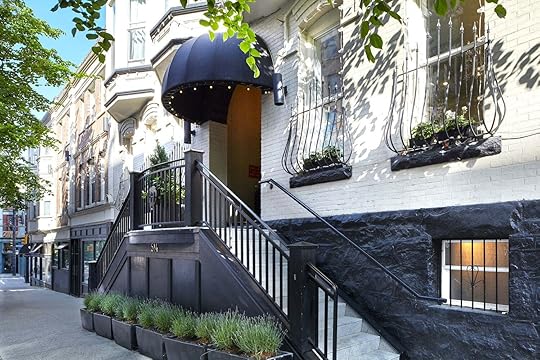
We hope you love the spaces and stays we recommend! Just so you know, Matador may collect a small commission from the links on this page if you decide to book a stay. Listed prices are accurate as of the time of publication. See our full Advertiser Disclosure here.
With Canada opening to US travelers, it’s time to plan that trip to Vancouver that you’ve been talking about for the past 18 months. To help you in your endeavour, we found three incredible Vancouver hotel deals to make your stay in Canada’s coolest city more affordable.
Stroll Vancouver’s most stunning park from the Rosellen Suites Stanley Park Hotel
Photo: Rosellen Suites at Stanley Park/Facebook
Strolling the shoreline of northern Vancouver’s Stanley Park is the perfect introduction to British Columbia. The park itself embodies the deep shades of green that the Pacific Northwest is known for. You can swim at Second Beach or Third Beach, paddling the water of English Bay in the middle of this stunning scenery. Even simply strolling or biking the path that separates the hilled park from the water is an experience in itself, particularly if you stop along the way for a pint and a snack at Stanley Park Brewing.
This Travelzoo deal tucks you in at the Rosellen Suites Stanley Park Hotel directly adjacent to the park for just $100. That’s 50 percent off the hotel’s normal rate and includes free parking and a $20 breakfast credit at The Basic, the hotel’s onsite restaurant. Suites at the hotel come with kitchens, lightning-fast WiFi, plus, you’ll be surrounded by the charms of Vancouver’s West End, home to some of the city’s best dining and nightlife.
Spending a few nights at the Rosellen is the best way to score a “win” on a trip to Vancouver this fall. Cancel and get your money back if you decide not to travel.
Price: $100 per night, plus free parking and breakfast
Experience Vancouver’s hippest neighborhood from the Victorian Hotel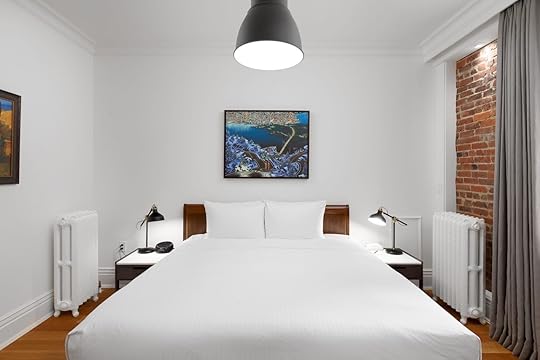
Photo: The Victorian Hotel
Should you wish to stay in a more central location, we recommend one of the Vancouver hotel deals from the Victorian Hotel, which has rates as low as $128 on Expedia right now. The hotel, Victorian in style as its name suggests, is among Vancouver’s most comfortable boutique hotels. Exposed brick walls and hardwood floors give the rooms a historic ambiance, yet the experience is exquisitely modern and luxurious, particularly for this price point. Dedicated work desks offer views out over the surrounding Gastown neighborhood.
You’ll be a quick walk to the Queen Elizabeth Theatre and Rogers Arena, as well as the acclaimed Canada Place convention center. But the real win is that you’re in Gastown, Vancouver’s hippest neighborhood. Regardless of your reason for being in town — be it a conference, a hockey game, or just for fun, a stay at the Victorian Hotel gives you prime access to an evening of strolling Cordova Street with stops for a pint at Steamworks Brewpub and a patio meal at La Casita or The Cambie. You’ll hear the whistle of the famous Gastown Steam Clock, and will return to a hotel room that’s as classy as you’ll feel when walking through the front door.
Price: From $128
Position yourself for easy transport by bookending your trip at the Fairmont Vancouver Airport
Photo: Fairmont Vancouver Airport
Gone are the days when airport hotels were drab, boring, and located in cookie-cutter clusters that ached from the stresses of overworked business travelers. The Fairmont Vancouver Airport is everything an airport hotel should be. It’s located in-terminal and rooms have views out onto the tarmac, where you can play the fun game of identifying planes based on the provided plane identification card. Rooms are done in the high-class style that Fairmont hotels are known for. The rooms are also very quiet. Amenities — including a pool and fitness center — are plenty. Thread counts are high. There’s nothing not to love.
Additionally, should you have a late-night or early morning flight, the hotel can have food prepared for you to either eat in-room or grab and go on your way out the door to the security checkpoint. With all the current fluctuation with flight schedules, you can at least rest easy here knowing that getting to your gate on time is a non-issue.
Price: From $235
More like thisWhere to StayThe best Airbnbs in Vancouver, from a skyhigh loft to a beachside cabinThe post Experience the best of Vancouver with these great hotel deals in the heart of the city appeared first on Matador Network.
A Colombian boxing legend now dishes fish and aphrodisiacs at his iconic Cartagena restaurant

Eating well is half the secret to a long, happy, and healthy life for Bonifacio Ávila Berrío, known in Cartagena, Colombia, as simply “El Bony.” The other half is staying as physically fit as a fiddle.
“I get up with the sun and come into the beach from my barrio to train every day,” Berrío tells me one weekday afternoon on the patio of his restaurant, Kiosko El Bony, which sits on the sand of Bocagrande Beach in front of Cartagena’s Hotel Caribe. At 72 years old, this former Colombian world championship boxer looks as nimble as many people in their 20s and 30s, and his speech is peppered with jokes and puns that show his mind is in top shape as well.
“When I was about 28 years old, a friend of mine said to me, ‘Right now it’s all good, but once you pass 38 years old, being a boxer is not really going to work anymore!’” Berrío says as he explains why a boxing champion at the height of his career decided to open a seafood restaurant well before he retired.
Now nearly four decades old, the restaurant is a true Cartagena icon, and one of the most highly recommended places to eat in the city. That’s no small feat with Cartagena being known as a food capital of Latin America. Visitors leave rave reviews for Kiosky el Bony and the locals swear by the potency of his “aphrodisiac” seafood cazuelas (stews).
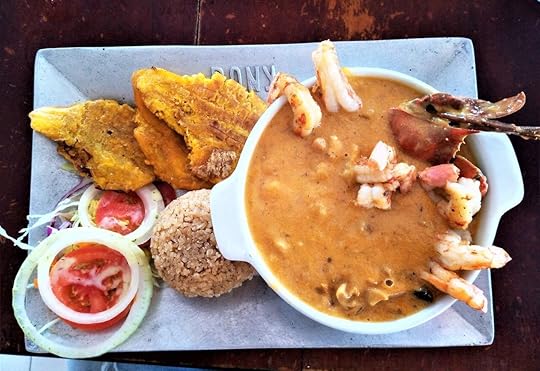
Photo: Ocean Malandra
“The cazuela aphrodisiaco is very strong,” Berrío explains. “It’s full of nutrients like phosphorus that give you energy and stamina. A lot of people come here just for that. They ask for the cazuela aphrodisiaco and then they leave ready to rumble.”
Bursting with shrimp, mussels, clams, and crab, the cazuela is also infused with herbs and spices that Berrío claims is the “authentic” way to do this Caribbean coast specialty, unlike the watered-down versions you get at most of the tourist-oriented restaurants in town. For Berrío, eating power-packed food like this was one of the keys to his success as a boxer, a career that he began in Cartagena in the early 1970s.
Born in Colombia’s Caribbean department of Sucre, which lies just south of Cartagena, Berrío knew he wanted to be a boxer since he was a little kid. He came to Cartagena to learn from “El Chico de Hierro” (The Iron Kid), who was a famous boxing trainer that took the young Berrío under his wing. Berrío survived by selling mangos on the beach by day and fishing under the Manga bridge by night, and in between, he quickly became a local boxing legend. Locals say that one of the ways he trained is by chasing and catching iguanas, much like how Rocky Balboa trained by chasing chickens in the Hollywood movie.

Photo: Ocean Malandra
Berrío’s big break came when Puerto Rican boxing legend Nelson Lasalle came to Cartagena, and the two squared off in front of a packed crowd in Cartagena’s historic bullfighting ring Plaza de Toros. Berrío knocked Lasalle out cold in the sixth round. The victory changed his life forever.
“Not long after that fight, I went to Germany to box in the Olympics,” Berrío recalls. “And later I went to England, to South Africa, and to Canada.” All in all, Bony fought 34 matches as the middle-weight champion of Colombia. He retired from boxing in 1978 to his beachfront restaurant, where you’ll still find him overseeing operations seven days a week.

Photo: Ocean Malandra
“I had worked a lot in my younger years, including right here on this beach,” Berrío says, gesturing to the golden sands and packed chairs of the Bocagrande beach. The ancient domes and spires of Cartagena’s Old City lie shimmering in the distance across the water.. “So I was happy and content to come back to the beach.”
No stranger to the sea himself, Berrío used to have his own team of a half dozen fishermen that supplied the restaurant with freshly caught fare every day. But nowadays, he says it’s easier to just hit the massive Bazurto market in the morning, where local boats show up after hours of pre-dawn fishing with nets bursting full of local species like pargo rojo (red snapper), lebranche (mullet) and sierra (swordfish).
It’s perhaps this dedication to fresh and healthy ingredients — equal to his dedication to boxing that catapulted him from the streets of Cartagena to national champ, that is behind Berrío’s success as a restaurateur. There’s nothing fancy about Kiosko el Bony. In fact, it looks like something out of the Jersey Shore with its Formica tables and simple chairs. But once the food comes steaming out of the kitchen, that’s where everyone’s attention goes.
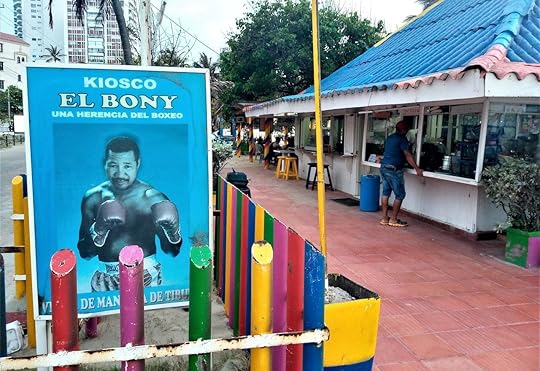
Photo: Ocean Malandra
Even on this weekday afternoon, the place is packed both inside and outside, both in the dining room and out on the patio. Waiters and cooks rush around, many of them Berrío’s family members, and all of them with a similar wry sense of humor that attempts to turn everything into an innocent, but often pertinent, joke.
“Those who don’t come to my restaurant,” Berrío says laughing, “well, to tell the truth, it’s like they never really came to Cartagena.”
The post A Colombian boxing legend now dishes fish and aphrodisiacs at his iconic Cartagena restaurant appeared first on Matador Network.
Planning a trip to Disney? Here’s a quick guide to each park’s COVID-19 protocol.

The happiest place on earth has made a few changes to its Disney magic since the start of the pandemic. At the start of the pandemic, all six parks around the world — Walt Disney World Resort in Orlando, FL, Disneyland Resort in California, Disneyland Paris, Shanghai Disney Resort, Hong Kong Disneyland, and Tokyo Disney Resort — closed their park doors to prevent the virus’ spread, but they’ve since opened with varying restrictions. Here are some reminders when planning your trip to one of these parks.
It’s important to keep in mind that each park has different guidelines, and these rules may change rapidly. We will continue to update this post, but remember to always follow up with each park’s website for details.
All parks encourage guests to be vaccinated. Every park has sanitizing sections and have increased the frequency of cleaning. Additionally, parks have the right to escort anyone out if they don’t comply with COVID-19 protocols.
Walt Disney World Resort – Orlando, FL
Photo: Walt Disney World/Facebook
Face coverings and screenings: Regardless of your vaccination status, masks are required indoors for all guests ages two and older. This includes upon entry throughout Disney attractions, buses, monorails, and the Disney Skyliner. Masks may only be removed for eating or drinking.Park reservations: To be able to enter parks guests must book same-day park and date reservations.Attraction availability: Some restaurants on the property are temporarily closed. Other attractions such as shows and parades may have limited availability or be closed.FASTPASS, MaxPass, Single Rider, and Magic Hours: FASTPASS services are currently unavailable.Disneyland Resort – Anaheim, CA
Photo: Disneyland/Facebook
Face coverings and screenings: Regardless of your vaccination status, masks are required indoors for all guests ages two and older. This includes upon entery throughout Disney attractions like buses and shuttles. Masks may only be removed for eating or drinking.Park reservations: All guests must book reservations before entering the parks.Attraction availability: Attractions like parades and nighttime spectaculars will return at a later date. Meet and greets are not currently available.FASTPASS, MaxPass, Single Rider, and Magic Hours: Magic Hours, FASTPASS, and MaxPass are temporarily unavailable.Disneyland Paris – Cheesy, France
Photo: Disneyland Paris/Facebook
Face coverings and screenings: All guests ages six and older are required to wear masks indoors and present a Health Pass to enter the park. Masks may only be removed for eating or drinking.Park reservations: Operating as normal, but guests are urged to register using their online registration platform to ensure entry.Attraction availability: Meet and greets, shows, parades, and the traditional character dining experience are temporarily unavailable.FASTPASS, MaxPass, Single Rider, and Magic Hours: The FASTPASS and Single Rider services are temporarily unavailable.Shanghai Disney Resort – Shanghai, China
Photo: WDW News Today/Facebook

Photo: Hong Kong Disneyland/Facebook
Face coverings and screenings: Guests will undergo temperature screenings and must make a health declaration online. Guests will also need to register with the LeaveHomeSafe app to obtain a QR code for entry anywhere on the resort and parks. Masks are required, but may be removed for eating or drinking.Park reservations: To enter parks, guests must book same-day park reservations.Attraction availability: Capacity control is being enforced in queues, restaurants, and stores.FASTPASS, MaxPass, Single Rider, and Magic Hours: FASTPASS services are operating as normal.Tokyo Disney Resort – Urayasu, Japan
Photo: Tokyo Disney Resort/Facebook
Face coverings and screenings: Guests will undergo a temperature screening before entering the parks. Masks are required for guests over the age of two, except when eating or drinking. Guests can remove masks in the summer season to prevent heatstroke.Park reservations: To be able to enter parks, guests must book same-day park reservations.Attraction availability: Throughout the park some restaurants and stores are limiting capacity.FASTPASS, MaxPass, Single Rider, and Magic Hours: Single Rider services are temporarily unavailable and alcoholic beverages sales are temporarily unavailable until Aug 31. More like thisNewsThis is how much more you’ll have to pay for Disney Parks tickets by 2031
More like thisNewsThis is how much more you’ll have to pay for Disney Parks tickets by 2031The post Planning a trip to Disney? Here’s a quick guide to each park’s COVID-19 protocol. appeared first on Matador Network.
Positive environmental news August

This is the Climate Win, the most positive sustainability news around the world every week.
If you follow the news, you know that a major infrastructure bill is inching its way towards approval in the US Senate — following passage by the House of Representatives of its own version. If you want to travel sustainably, you’ll be thrilled about two seriously major developments in the finalized bill.
First, we need to point out that, climate-wise, a lot of the bill doesn’t address the cause of climate change. Rather, in addition to financing much-needed upgrades to US infrastructure, much of the bill funds projects that only address the effects of a warming planet. As The New York Times reports, it will pay for dredging along rivers susceptible to floods, grant billions of dollars to the US Forest Service for data-driven fire mitigation tactics, and fund the National Oceanic and Atmospheric Administration’s drive to develop prediction and prevention models of future flooding.
However, there are some key places where Biden’s climate and infrastructure agenda, which we’ve reported on, tackles the sources of climate change — namely, the burning of fossil fuels and the destruction of the natural landscape.
For one, Amtrak, the nationwide passenger railway service provider, is expected to glean some $66 billion in new funding for maintenance, route upgrades, and development. That is huge news for the chronically underfunded railway. The bill also aims to change the legal mission of Amtrak to “meet the intercity passenger rail needs of the United States.”
Since its founding in 1971, Amtrak’s mission has simply been to “justify” its use of public tax dollars. Think of this as a paradigm shift in the mindset of a lackluster student. Rather than showing up to school with a “Cs get degrees,” mentality, Amtrak’s new mission is to secure an “A” across the board — with extra credit to push its efforts over the top. What we as traveling Americans stand to gain is more efficient and effective service from Amtrak. This will include more routes and hopefully, higher-speed trains in the near future.
The second win, if and when the bill becomes law, would hasten the nation’s transition to electric vehicles. The bill would allocate $7.5 billion for the deployment of 250,000 EV charging stations around the country, according to CleanTechnica. This could revolutionize US efforts deliver environmental justice to underserved communities — since more than 33 percent of Americans don’t have a garage or anywhere to charge an electric vehicle at their home.
Smart Cities Dive, reports on a pilot project underway in Kansas City to install EV chargers on light poles and in other conspicuous public places around the city. The goal is to provide charging access to those who cannot install a charger at home or anywhere else where their vehicle spends a lot of its time parked. Together with the charging stations funded by the infrastructure bill, adoption of this pilot by other cities would be huge.
One could certainly point out that a household that can’t afford an EV charging station certainly can’t afford a $70,000 Tesla. But the all-electric Nissan Leaf costs $27,000, and prices for electric vehicles continue to drop. As we’ve reported in this column, EV “gas stations” are coming and as their adoption becomes more widespread, The idea behind the Kansas City initiative is to get ahead of the curve, and to ensure that charging is available for those who need it, whenever they need it.
More climate winsOn the topic of government-funded climate initiatives, Canada’s federal government has announced it will invest $25 million Canadian dollars ($19 million) to boost the ability of wetlands and grasslands across the country to store carbon, Civil Eats reported. The plan will distribute the money to three major organizations to help them enhance the health and functionality of these habitats.
Rapid development in Dubai has made the city anything but friendly to environmental and humanitarian causes. But one developer is giving back with the creation of 500,000 square meters of coral reef. CNN reported that the developer of the Heart of Europe megaresort, among the swath of man-made islands known as “The World,” will fund the creation of the reef through fragmentation. Small pieces of coral, cut from larger pieces, will be monitored until they grow large enough to form a reef.
We close this week with a feel-good story of repurposing and recreation. Across the United States, more than 1,400 abandoned rail lines have been converted into hiking and biking trails, with the help of the organization Rails to Trails, Matador reported this week. The trails can be found in every US state. Your mission this weekend is to find the rail trail closest to you and plot your escape to its trailhead. 
The post The US infrastructure bill will make sustainable, affordable travel a reality appeared first on Matador Network.
Ultimate guide to solo RV travel

Traveling solo is the kind of thing everyone should do at least once. Being on your own in an unfamiliar place, while a challenge, is a transformative experience. And when you’re solo traveling by RV, the personal growth you’ll experience is only amplified.
Alone on the open road, it’s easy to feel like you’re living in a classic “Choose Your Own Adventure” book. The freedom and flexibility are unmatched: You can explore in any direction the wind blows you. You can pursue new passions and connect with yourself. Whatever kind of adventure you’re looking for, you can go and find it.
Of course, traveling alone has its learning curve — as does RV travel. But put them together, and you’ve got a recipe for a once-in-a-lifetime experience.
CHOOSING A RIG, BUILDING YOUR SKILLS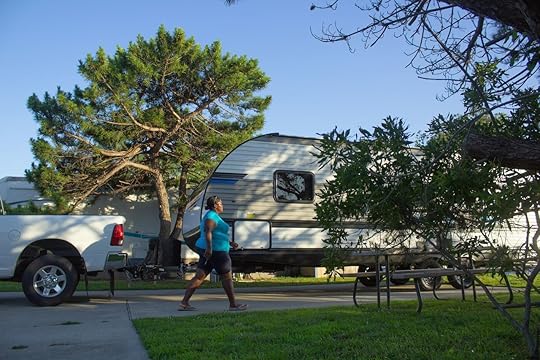
Photo: Mike Bacanu
Making sure you can go it alone will require choosing an RV that you feel totally comfortable driving or towing, parking, setting up, and breaking down on your own. Don’t hesitate to try out multiple models so you can get a real feel for what it’ll be like behind the wheel. And because you’ll only have to cater to your own needs and comfort, solo RV travel offers the opportunity to choose a smaller RV that’s more versatile and maneuverable — maybe even one that can get to out-of-the-way places inaccessible to bigger rigs.
The easiest way to hone the skill of driving your RV may also seem like the most obvious: practice! Drive around your block and neighborhood, preferably several times and in a variety of weather conditions. Be confident and comfortable maneuvering into and out of gas stations, making tight turns, and driving on both smaller surface streets and major highways.
Make up for not having an extra set of eyes by adding modifications that will help you on the road or at camp. High-tech accessories such as back-up cameras and dash cams will make for a less stressful drive. When it comes to setup, look for a leveling system that’s dependable and easy to operate alone.
Learn how to perform the minor repairs your RV might require, and take steps to avoid issues that consume more time and money. Something as simple as learning how to routinely monitor tire pressure could save a major headache down the road — not to mention a solo-and-stranded situation.
But no matter how much you plan and prepare, things will almost assuredly go wrong on the road. Tires go flat. Belts snap. Gas tanks run dry. It’s all a normal part of the adventure, but you should know how to enlist a hand when you need it.
Before you set out, sign up for a roadside assistance plan. Designed specifically for RVers, a Good Sam Roadside plan will save you if you breakdown and your rig needs expert help. To that end, it’s important to think about protection for yourself, too. Invest in emergency travel insurance that will provide coverage if you fall ill or something goes wrong while you’re traveling.
STAYING SAFE, BUILDING COMMUNITY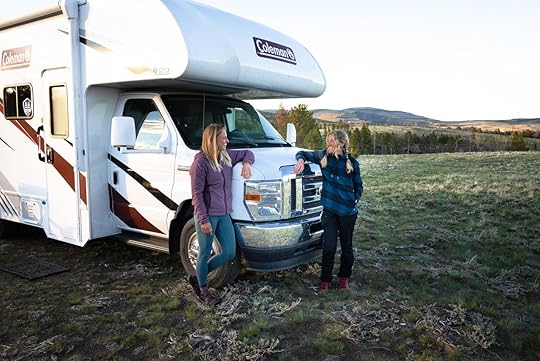
Photo: Amon Barker
Safety is important — especially when you’re on the road alone. Knowing a few tips and tricks will help you keep yourself secure.
Let’s start with campground choice: Pick places that are staffed or monitored, preferably 24/7. And while it’s never polite to blind your campground neighbor, it is a good idea to install outdoor lighting on your RV to deter anyone from sneaking around. Translucent or opaque window coverings are another beneficial add-on, helping to protect your privacy even in a busy campground.
Depending on what type of activity you’re pursuing, be calculated about your level of risk. RV travel requires a good dose of fearlessness, but it’s also important to stay smart while kayaking or climbing alone, for instance. If you plan to hike, paddle, or ride solo, be sure to sign the trail log or the campground ledger before heading for the backcountry, and ensure there’s always someone who knows you’re out and where you’re headed.
Even for the most experienced traveler, loneliness can strike. The good news is community is easy to come by when you’re RVing. Join online groups, get to know folks around the campground, and attend RVing events to build friendships and find travel companions. Don’t know where to start? It’s Good Sam to the rescue again — the nation’s largest RV community will steer you in the right direction.
BEST SPOTS FOR SOLO ADVENTURE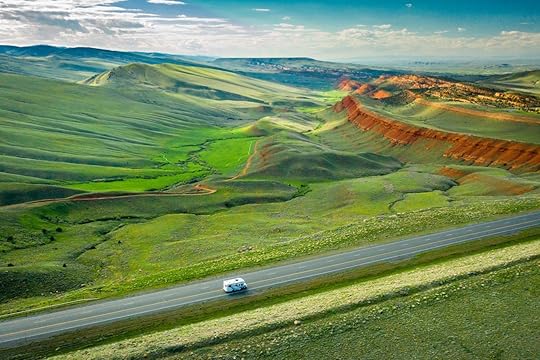
Photo: Brian Lewis
The list of potential adventure destinations is a long one for the solo RV traveler, but we’ll present some standouts below. And remember: Wherever you’re headed, there’s likely a Good Sam campground near you.
Lake Placid, New YorkFew places offer more natural beauty than the Adirondack Mountains, and no matter the time of year a solo camper in Lake Placid is guaranteed a warm welcome. For travelers in smaller RVs, state campgrounds like Lincoln Pond and Taylor Pond give campers their own little slice of paradise.
Marfa, TexasWith its picturesque landscape and reputation as a hub for travelers, artists, naturalists, and more, Marfa is the perfect place to kick off a solo RV adventure. There a number of local RV parks and a friendly scene full of fellow adventurers — Marfa’s the place to go if you’re looking to make friends. Bonus points if you’re there in late summer for the town’s famous festival celebrating the area’s mysterious “Marfa Lights.”
New River Gorge National Park, West VirginiaAmerica’s newest national park is not to be missed. Even beyond the protected and sprawling Appalachian hardwood forest and raging whitewater, the New River Gorge really does have a little something for everyone. Historic small towns and artistic enclaves dot the area and are a blast to explore. And when you’re on your own, what’s to stop you from spending a whole day winding around those country roads? The park has several small campgrounds (no hookups) that can accommodate RVs.
Indiana Dunes National Park, IndianaIf you’re seeking peace and quiet, you’ll find it along the southern shore of Lake Michigan in Indiana Dunes National Park. Relax on the beach, birdwatch in the dunes, or — in the colder months — ski or snowshoe on the park’s hundreds of miles of trails. If you’re traveling solo to get away from it all, there’s no better place to be. The park’s Dunewood campground has 53 RV-only sites (no hookups).
North Cascades National Park, WashingtonSolo travelers with something to prove should head straight for the wilderness of North Cascades National Park. Soaring, glacier-topped mountains and clear, cold lakes make this some of the most beautifully rugged terrain you’ll find anywhere in North America. If the “mountains are calling,” answer them by solo RVing in the Cascades.
Of course, simply getting out there is the goal. Even if your destination is 30 minutes from your back door, solo RV travel will show you a world you might not believe exists anymore in travel — one with challenges you rise above and adventures that are truly your own, one with infinite freedom and possibility. And it’s all within your reach. All you have to do is travel different. 
The post Solo RV travel: Everything you need to know appeared first on Matador Network.
August 5, 2021
PETA wants to buy Charles Darwin’s home and turn it into an animal empathy museum

Charles Darwin’s former home is on the market for almost $1.3 million. But the People for the Ethical Treatment of Animals (PETA) is hoping the owners will donate money or significantly reduce the cost of the home so that the organization can turn it into a museum focused on animal empathy.
The five-story home has six bedrooms, five reception rooms, two kitchens, a double garage, original fireplaces, and stunning views of the Kent coast in Ramsgate, England. It has a connection to the work that the Father of Evolution is most known for, too. The home is where Darwin studied barnacles in 1850, which supported his theory of evolution.

Photo: Miles & Barr Exclusive/Shutterstock
Most people today know Darwin for his theory and studies on the fauna of the Galapagos Islands, but he was also an advocate for the good treatment of animals. According to PETA, he was vocally against the steel-jaw traps that game wardens and fur trappers often used because they crushed limbs.
“Charles Darwin’s groundbreaking theory of evolution established humans as just one animal among many, which is the very foundation of the modern animal rights movement,” said PETA founder Ingrid Newkirk in a press release. “PETA’s empathy museum would celebrate Darwin’s legacy by reminding visitors that we’re all part of the great orchestra of life on Earth.”

Photo: Miles & Barr Exclusive/Shutterstock
In the press release, PETA also made public Newkirk’s letter to the realtor company in charge of selling Charles Darwin’s home, Miles & Barr Exclusive. The letter details Darwin’s discovery that animals, much like humans, experience emotions and pain.
“At PETA’s empathy museum, guests would learn how Darwin spearheaded legislation to regulate experiments on animals in England,” Newkirk said in the release. 
The post PETA wants to buy Charles Darwin’s home and turn it into an animal empathy museum appeared first on Matador Network.
8 mouthwatering styles of mac and cheese from around the world

The combination of salty, savory, melty cheese and tube-style noodles is one that inspires nostalgia for eaters all over the world. The choice of cheese, shape of noodle, and inclusion of extra ingredients may change depending on the destination, but the fundamental dish is the same: mac and cheese, one of the most recognizable comfort food dishes on the planet. From Brazil and the Bahamas to Germany and Finland, home cooks get the credit for perfecting mac and cheese recipes that are now staples of their national cuisines. Here are eight of the tastiest worth traveling the world to try.
1. Brazil: Macarrão com requeijãoThe secret to Brazilian mac and cheese’s satisfying texture is all in the sauce. The key ingredient is requeijão cremoso, a mild ricotta-like cream cheese with a consistency similar to yogurt or condensed milk. Cubes of mozzarella are mixed in for meltiness, and mayonnaise can be added to make the cheese sauce extra velvet-y. Brazilians are also liberal with add-ins ranging from tomatoes to peas, peppers, corn, or olives. Once the pasta is tossed with the sauce, more mozzarella is layered on top, and the whole dish is baked until lightly bronzed.
2. Indonesia: Makaroni schotel
Photo: Iren_natty/Shutterstock
Makaroni schotel, or makaroni schaal, is an Indonesian casserole with roots in Dutch cuisine. Dutch colonizers introduced macaroni-style noodles to the island nation, and the name of this preparation, which may also be referred to as macaroni panggang, literally translates to “macaroni dish” from the Dutch word for the vessel it’s baked in. Meat is a staple addition to makaroni schotel, whether it’s corned beef, sausage, or another animal protein, and cheddar is a go-to cheese. On the side, Indonesians may serve sambal, or chili sauce, for a spicy kick.
3. Israel: Lokshen kugelKugel is a Yiddish term that describes any starch-based Ashkenazi Jewish casserole or baked pudding. It’s traditionally served on Jewish holidays, notably the Sabbath. Lokshen kugel refers to kugel made with egg noodles, rather than potatoes, rice, or another starch. It can be sweet or savory, dairyful or dairy-free. Many takes on lokshen kugel incorporate fresh cheese, such as cottage cheese or cream cheese, landing the dish in mac and cheese territory.
4. Germany: Käsespätzle
Photo: Nina Alizada/Shutterstock
Likened to both pasta and dumplings, spätzle is a small, strand-like German egg noodle. Its origins trace back to Swabia, a medieval region of southwestern Germany where the modern states of Bavaria and Baden-Württemberg now lie, but similar noodles are prepared across Central Europe, from Swiss knöpfle to Hungarian nokedli. In Germany, grated cheese, or käse, is sometimes melted into spätzle, creating a dish similar to mac and cheese. Emmentaler, bergkäse, and other alpine cheeses are most common, though the cheese of choice varies by region. Crispy, crunchy, thinly sliced fried onions are a popular garnish.
5. Norway: FiskegratengNorway’s take on mac and cheese casserole differs from its Swedish and Finnish counterparts in one major way: the use of fish. Cod and salmon are two of the most popular choices. Bite-sized pieces of either fish are combined with macaroni noodles, covered in a bechamel-like white sauce called hvit saus, topped with a layer of breadcrumbs, and baked until golden brown. Cheese is technically optional, but the creamy, savory sauce creates a similar effect even when cheese is omitted. Peas, broccoli, and other veggies may be added to the mix.
6. Bahamas: Mac and cheese pie
Photo: Fanfo/Shutterstock
A staple side dish at family gatherings, Bahamian mac and cheese is baked like a casserole and served in squares like lasagne. Though the cooking method is shared by multiple dishes on this list, the Caribbean-style preparation has a distinct flavor owing to a handful of specific ingredients: green bell peppers and spicy habaneros, for example, as well as spices like paprika for a smoky touch and some extra heat. Perhaps the biggest departure from mac and cheese casseroles prepared elsewhere is the use of canned evaporated milk, which Bahamians began using when fresh dairy was hard to find and is now integral to the recipe.
7. Finland: MakaroonilaatikkoCheesy macaroni casseroles are eaten throughout Scandinavia. Finland’s makaroonilaatikko is a particularly popular dinnertime dish, one that can be made from scratch or purchased pre-prepared from grocery stores. It typically incorporates ground beef or other minced meat and is traditionally served with lingonberry jam, although ketchup may be used as a substitute. In Sweden, a similar dish called makaronipudding combines macaroni, cheese, ham, and leeks.
8. Switzerland: Älplermagronen
Photo: Elena Salminen/Shutterstock
Älplermagronen, or alpine macaroni, presents all the familiar flavors of mac and cheese with a few tasty additions. Traditional Swiss cheeses such as gruyère impart nutty notes while cubes of potatoes add texture, both when eaters bite into them and by releasing starch as they cook. Combined with milk or cream, this makes Swiss mac and cheese particularly hearty, as does the addition of bacon or sausage. Any tubular pasta will do for the base, though macaroni or elbow-like hörnli are most common. Once cooked, onions and extra bacon or sausage bits can be used for garnish, and a side of applesauce contributes a complementary sweetness. 
The post 8 mouthwatering styles of mac and cheese from around the world appeared first on Matador Network.
It’s time to stop using the word ‘museum’ to describe pop-up museums

The definition of “museum” has remained relatively stable over the years. The concept originated more than 2,500 years ago in Babylon, when wealthy individuals displayed their private collections of art and artifacts in special galleries. Even in 500 BCE, humans were eager to immerse themselves in a past and culture they wanted to understand. Since then, museums have largely continued to be sanctuaries of human curiosity (though for much of recent history they’ve also been the home of artifacts stolen through colonialism). Any true sense of sentimentality and elevation, however, ended with pop-up museums.
You might not have visited a pop-up museum yourself, but you’ve probably seen them flash across your Instagram feed. The Wonderland-esque aesthetic and impossibly vibrant reds and yellows look like a life-sized version of Candyland met the beginning of a Wes Anderson movie. The museums are designed to be undeniably eye-catching. Arguably, they’re designed for little else.
Pop-up museums are “museums” that operate for a limited time with highly specific gimmicks. The word “museum” is used lightly, as these are more like pop-up photo experiences than anything else. Think like the Museum of Ice Cream or the Rosé Mansion, the latter of which describes itself as “a wine bar, an Insta-worthy amusement park, and a science museum.” These often have Instagram marketing campaigns and spots where people are encouraged to take selfies they can post online with the appropriate hashtags. Some, like the Museum of Selfies in Hollywood, are commendably transparent and self-aware in the pursuit of viral notoriety.
I enjoy mindless family excursions as much as anyone else, but pop-up museums are more than just benign diversions — they’re a symbol of the growing culture around “main character syndrome” where people think of themselves as the main character in their own movie. Now that’s metastasizing from social media to our cultural and intellectual institutions.
Let’s not get ahead of ourselves: pop-up museums can be harmless funDon’t get the wrong idea. The decline and fall of humanity might be right around the corner, but pop-up museums and selfies won’t be the culprit. We should really view these places the same way we view Chuck-E-Cheese, and we certainly don’t hold Chuck-E-Cheese to any high-minded intellectual standards. With a bright aesthetic and cheesily fun offerings, pop-up museums are great for families looking to entertain their young kids and teens on a rainy day. At first glance, you’d even think they were built specifically for kids aged three through 12.

Photo: Hayk_Shalunts/Shutterstock
The problem here is that pop-up museums aren’t designed for children. They’re designed for adults by marketing experts who understand that, as a society, our interests are becoming increasingly childlike.
The “me” culture without a whole lot of cultureThe reason childhood is such a fond era of our lives is because it’s truly all about “me.” In a happy childhood, the universe revolves around us. It can feel like everyone looks at us and everyone listens to us. We have short attention spans, and fascination with bright colors and activities that offer instant gratification. Sound familiar?
Social media, whichever platform you prefer, is a tiny dose of the joys and attention we sought in childhood. As a highly efficient vehicle for vanity and self-aggrandizement, social media has been the primary catalyst of “me” culture. It keeps us rooted in the childlike idea that life is about attention, validation, and positive affirmation. Pop-up museums are an extension of this.
Pop-up museums are a “me” experience. Hiding behind the colorful gimmicks are number-crunchers hoping visits translate into social media posts, and that those posts translate into revenue and free advertising. Pop-up museums use the egos of their guests as a springboard for success, and you have to hand it to the designers and marketing pros: It’s a pretty safe bet.
Consider the Color Factory, currently located in New York City and Houston. The museum is designed almost exclusively to tempt your hand into your pocket, where it will inevitably find an iPhone as you whisper, “Damn, that’d make a really Instagrammable photo.” Its rooms are filled with swirling confetti, rainbow-hued art installations, a giant ball pit (Chuck-E-Cheese, anyone?), and in case you didn’t get the memo already, photo booths spaced throughout. The Museum of Selfies takes a similar, if less apologetic, approach. The museum features a bathtub filled with gold coins, a private jet-themed set, and a Game of Thrones-esque throne. You know, for the truly modest. And, of course, the place rents out selfie sticks.
Traditionally, museums have been about enjoying other people, their culture, and their history. Many pop-up museums make it about the person we all know best: ourselves, who we already see enough of on our own social media pages.
Pop-up museums oversaturate the entertainment spaceOur leisure time is a precious commodity that always seems to be shrinking. Between the demands of work and other obligations, we can only spare so much time for things we enjoy. Luckily (or perhaps, unluckily) we have more recreational options than ever. There are bars with gimmicks to suit every taste, operators offering an endless catalogue of experiences and guided tours, too many streaming services, and more that are all vying for our attention. Museums — real museums — are often lucky to even be on the list these days unless the institution is considered a “must stop” on travel lists and guides.
Time is short, options are endless, and our attention spans are miniscule. Pop-up museums exploit our desire for low-investment entertainment to offer museum-esque experiences without the learning or cultural value. They capitalize on our vanity and shrinking attention spans to tempt people away from museums with actual cultural significance. I mean, a guy who goes to the mall just to sit in Brookstone’s massage chairs has no right to tell anyone what they should or shouldn’t do in their spare time, but there’s a reason pop-up museums flit from city to city: If they overstayed their limited welcome, the short attention span of their target audience would work against them.
They contribute to the anti-intellectualization of cultureComparing pop-up museums to the Guggenheim is like comparing frozen pizza to Brooklyn style. No, pop-up museums aren’t “real” museums. The ancient Babylonians wouldn’t recognize the concept of the Rosé Mansion, and there’s a good chance people even half a century ago wouldn’t put it into the “museum” category. But more important than terminology is the co-opting of culture by institutions that barely even pretend to offer anything of value.

Photo: travelview/Shutterstock
In an ideal world, we would have a clear delineation between experiences that provide cultural, artistic, and historical value, and those that merely offer mindless entertainment. There’s absolutely nothing wrong with mindless entertainment — I’d even argue it’s essential for a balanced lifestyle. The problem is that the line is becoming increasingly blurred. Thinking of yourself as the main character is infiltrating culture like it never has before. Even influencers with moderate followings are signing deals for hundreds or thousands of dollars. OnlyFans saw a 75 percent increase in “model sign-ups” in April 2020 alone. Pop-up museums are in the same conversation as traveling art exhibitions.
If a particular pop-up museum tickles your fancy, by all means go. I wouldn’t rule out a trip to the Museum of Ice Cream myself. But when there’s little distinction between real culture and “me” culture, it hints at a broader societal problem. We already live in an era of rampant anti-intellectualism. It’s most evident in politics, but also in the social dynamics of communities around the country: being interested in history, literature, art — you know, stuff you find in museums — gets you labeled an “out of touch” elitist. It’s becoming more common to forego museums while traveling in favor of trendier, more Instagrammable experiences.
Pop-up museums won’t bankrupt real museums anytime soon, and they’re not single-handedly facilitating the downfall of society. But as long as our attention spans keep shrinking and the heavily filtered devils on our shoulders keep whispering “take a selfie” in our ears, we should at least be honest with ourselves. These experiences aren’t museums. They’re a symptom of “me” culture in a world that should really be more about “us.” 
The post It’s time to stop using the word ‘museum’ to describe pop-up museums appeared first on Matador Network.
Raft Idaho’s Salmon River and actually help the salmon in their fight to survive.

“In the west, when you touch water, you touch everything.” – US Rep. Wayne Aspinall, D-Colorado, 1896-1983
On a recent trip down the Lower Salmon River in Idaho, I occupied a rear seat in a dorie, a flat-bottomed, shallow-draft boat used to navigate fast-moving rivers. As we proceeded through the Class III Snow Hole Rapid, the watercraft seemed the ideal vantage point to pass through the trip’s most intense rapids. It was a craft that had helped to make OARS, our guiding company, a pioneer in commercial whitewater trips.
The river flowed at 3,500 cubic feet per second (CFS), significantly below the average for mid-July, but the low water presented its own challenges with fin-shaped rocks darting towards the sky from the river’s surface. On our 70-mile journey, we’d pass four distinct canyons and through the Lower Salmon River’s confluence with the Snake River at Devil’s Canyon. Over four days, I experienced firsthand how the Northwest is coming together to fight for the sockeye salmon and for the rivers that bring the region together.
Experiencing the Lower Salmon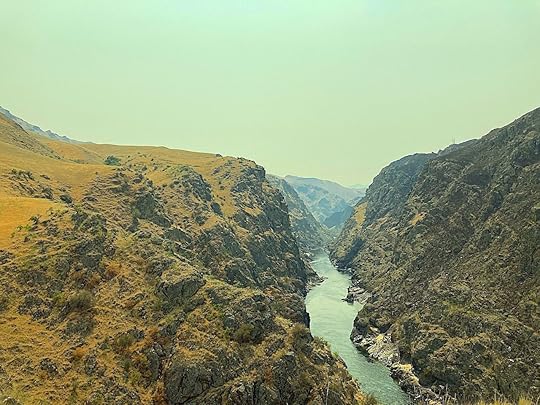
Photo: Tim Wenger
Travelers who navigated the Salmon River in the early 1800s nicknamed it “the river of no return.” Moving downstream proved doable, enjoyable even. Turning around to return to where they’d started, however, proved impossible — given the tight rapids, strong flow, and narrow canyons. Sockeye salmon, for whom the river is formally named, didn’t have that problem. Each year, thousands traveled downstream towards the Pacific and hundreds made the journey back to the breeding grounds, spawning a new generation to make the same run all over again. Today, factors like dammed waterways and increasingly large wildfires mean fewer salmon make it back to their spawning ground.
The hillside just across the river from our starting point — along with much of the 76-mile stretch we would cover on the trip — had burned less than two weeks prior, flames lighting the night sky for the boaters camped along the river’s sandy beaches. The surrounding landscape of grassland sprinkled with ponderosa pines is well acclimated to wildfires. Moderate blazes are not just common and natural, but necessary to maintain proper forest health. Still, witnessing it firsthand isn’t easy.
“It felt apocalyptic to see this place burn and the fish die because the water is so hot,” our lead guide, Sarah Mallory, told me as she guided the dorie through Snow Hole Canyon. “This river is as close as many of us have to a place that feels like home. This is where we feel our best selves, where we are the happiest. To see it like that, it was hard.”
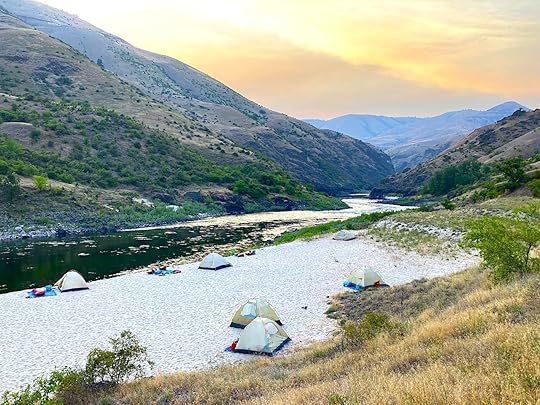
Photo: Tim Wenger
Passion imbued everything our guides told us over four days on the water. Nearly all of them were drawn into this line of work by a life-changing river trip of their own that had revealed to them both the importance of rivers to our ecosystem and to the thrill of floating down them. They were deeply knowledgeable as well. On a quick hike to see makeshift stone housing set up by Chinese miners who arrived in northern Idaho in the 1860s searching for gold, we learned how the car-length spacing and fire-resistant embers of the ponderosa pine make it more resistant to catastrophic fire.
Despite the ponderosa pine’s adaptation to fire, I was struck by climate change’s obvious impacts on the region. Increasingly common large wildfires threaten the salmon that run these rivers. The warmer the days, the warmer the water. And the warmer the water, the lower the level of breathable oxygen in it. More than 200,000 sockeye salmon were killed by hot water while running up the Columbia towards the Snake and Salmon Rivers in 2015 alone, according to a report in The New York Times. The number of fish spawning here each year has dropped from 50,000 per year in the 1950s to about 1,500 per year now.
The Nez Perce and other Indigenous peoples used farming and regular burns to maintain the health of the forest and grassland, optimizing natural fire cycles with their own small prescribed burns. Historically, large fires have happened here every 40 to 75 years, our guides told us. The Great Fire of 1910 burned some three million acres in Idaho and Washington and killed 87 people, largely firefighters. The threat of more common large fires is greater now than ever before due to warmer temperatures combined with over-zealous forest management during the late 19th and early to mid 20th Centuries.
At camp during sunset, the orange glow of the smoke-hued sun rippled off the water. Throughout this day, our second, our sinus tingled most, as we had navigated the tight turns of Cougar and Snow Hole Canyons — where each bend in the river revealed a hillside shrouded in haze from four wildfire complexes that were burning in the Northwest.
The rivers of the northwest are bridging divides to bring people together
Photo: B Brown/Shutterstock
Beyond fire, dammed waterways also threaten sockeye salmon. While the Salmon River ranks among the longest undammed rivers in the US, the Snake River has four controversial dams. These dams, along with water storage facilities and other man-made structures, impact the fish’s ability to run the 900 miles upriver from the Pacific Ocean to their Idaho nesting grounds. This includes running up the Salmon River. Climate change is exacerbating this, with both warmer temperatures and the West’s ongoing drought diminishing water flow.
The battle between dam advocates and those arguing for the removal of the dams has become known in the Northwest as the Salmon Wars. Dam advocates cite the clean hydropower produced, along with the ability of agricultural barges to run from Portland, Oregon, all the way to Lewiston, Idaho, the basecamp for most river trips down the Lower Salmon.
While that provides a major economic boon to the region’s growers and businesses, salmon and steelhead trout in both rivers are listed as endangered or, at the very least, threatened. One advocate for the salmon is Republican Idaho Congressman Mike Simpson. In February of this year, Simpson released his plan to recover the critically endangered fish populations in the region by removing the four dams along the Lower Snake River.
The Columbia Basin Initiative calls for the removal of the dams so that the salmon may more easily make their way back to their breeding grounds. It calls for the clean power produced by the dams, roughly four percent of the region’s total power output, to be replaced by clean sources operated by regional energy producers. It cites data showing that the best way to recover salmon populations is to remove the dams. The plan needs the support of Congress and Simpson’s local constituents, and appears to be heading towards passage.
“Changes of this magnitude might be unnerving at first, but we have a unique opportunity to create a solution that finally puts a stop to the never-ending salmon wars,” said Simpson in a press release announcing the plan. “This concept could take Idaho’s salmon off the path toward extinction and put them on a more certain path of sustainability and viability. We CAN protect our stakeholders and modernize our energy system for the next fifty-plus years, and we CAN do this on our terms.”

Photo: Tim Wenger
Simpson has partners across the aisle and across sectors. The Nez Perce Tribe released a statement of support, with its Chairman Shannon F. Wheeler saying:
“We view restoring the lower Snake River — a living being to us, and one that is injured — as urgent and overdue. Congressman Simpson, in focusing on the facts and on a solution, speaks the truth — that restoring salmon and the lower Snake River can also reunite and strengthen regional communities and economies.”
The Yakama Nation released a similar statement of support, as did the Confederate Tribes of the Umatilla Indian Reservation. One non-profit representing the unifying force of rivers is Northwest Strong, a collaborative project among American Rivers, Under Solen Media, and local residents advocating for the Upper Snake, Lower Snake, and Lower Columbia. The group has successfully brought together these unlikely allies.
“The goal is to demonstrate that in the Northwest, we have more in common than we think,” says Amy Kober, Executive Director of American Rivers. “We are united by shared values and a love of this special place. And when it comes to saving salmon and addressing long-standing challenges on our rivers, we need a comprehensive and collaborative approach.”
You can support these conservation efforts by taking a river trip with OARS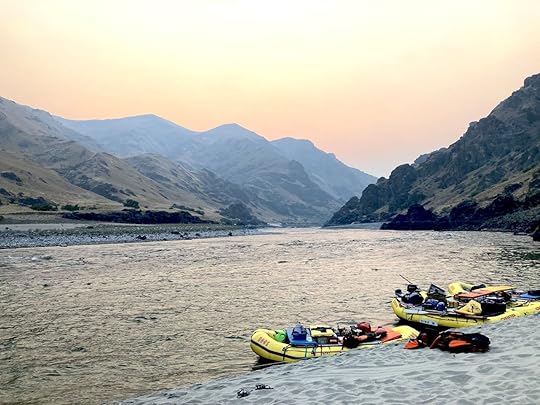
Photo: Tim Wenger
This is where you come in. You can voice your support in three primary ways. First, take an epic river trip with OARS and see this amazing place for yourself. OARS doesn’t just provide its guests with a world-class experience, as evidenced by its many repeat guests, but it contributes a percentage of revenue from each trip to conservation-related causes supporting the rivers on which it guides.
Beyond financial contributions, a multi-day river trip with OARS offers a first-hand lesson in Leave No Trace ethics as they pertain to life on the river. Each stop during our four days on the Salmon and Snake rivers was an opportunity for the guides to teach us about where we were traveling. OARS also posts calls to action on its blog, making it easy for advocates to stay vigilant even when far from the flowing waters of the Salmon, Snake, or other waterways.
Free-flowing rivers support long-term, healthy, and sustainable habitats for fish and the natural surroundings. These rivers do the same for the economies that depend on them. Conservation and the recreational economy that it spawns is that common ground. The rivers of the Northwest can be an example for others to follow.
This is not extreme. It’s not radical. It is the only way forward.
We all want what’s best for the rivers. The jet boaters and the fishermen. The ancestral inhabitants and the hunters. The river rats and the travelers they guide downstream. Even the politicians and the environmentalists.
“This is a once-in-a-lifetime chance to save iconic species and invest in one of the most dynamic regions of the country. It will strengthen the region and the nation, bringing one of our most important rivers back to life,” says Kober.

Photo: Tim Wenger
On the final night of the trip, we pulled into Confluence Camp, where the Salmon River spills into the larger Snake River and joins its northwestern flow towards the Columbia River. Oregon and Washington were visible from camp on the shoreline of western Idaho. Looking southeast into the depths of Hell’s Canyon, the water flowed towards me in a bubbly turquoise, an eerie but beautiful contrast to the jagged limestone walls that gave the canyon its name. The area just above us had been on fire less than two weeks before.
I scrambled up an embankment of loose rocks above the confluence to find one solitary tree protruding from the ashes. Parched and surrounded by black, it was a reminder that this land is fragile and in modern times we have asked too much of it. The American West is not my ancestral homeland. I am here as a result of past injustices. But as a lifelong resident of the West, I feel obligated to advocate for the future of the lands that hold me.
The lone tree also struck me as a signal that despite the increasing prevalence of intense wildfires, the hotter summer days, and faster-melting winter snowpacks, there is hope for the West. That hope lies in us, the people who call this amazing place our home — to unite above our differences and let common ground bring us together. The winding corridors of the Salmon and Snake Rivers can show us the way, if we only listen. 
The post Raft Idaho’s Salmon River and actually help the salmon in their fight to survive. appeared first on Matador Network.
Your family can get paid $1,500 just to sleep in a tent in your favorite campground
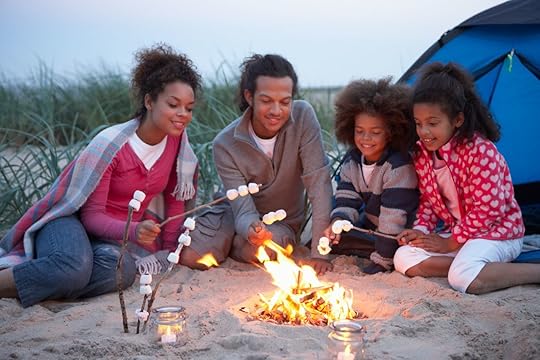
Sleep Junkie is on a mission to improve your sleep. And it will pay you to do it.
The one-stop source for advice on sleeping and the items you need to do it seeks to answer the pressing question of, “How do I get the best night’s sleep?’” And now it’s added a twist by asking, “How does sleeping outside impact people?”
The sleep-obsessed folks at Sleep Junkie are seeking a family of four to help find out. They’ll invite that family on an all-expenses-paid trip to be “sleep testers” for their study on how sleeping outside affects different people physically and mentally, as well as on the quality of sleep they can get while outside.
The family of four chosen will get to stay at any campsite of their choice. There, they’ll spend three nights outdoors enjoying the amenities provided at the site. During the stay, the family is required to compile a report of the family sleeping experience.
This report will focus on temperature, sounds of the wild, humidity levels, what sleeping facilities they brought, and how sleep aids enhanced their sleep.
The study is open globally to anyone who meets the criteria. To be considered, adults must at least be 21 years of age, speak fluent English, and have access to camping gear. For the study to be authentic as possible, Sleep Junkie is not looking for camping experts.
Submit an application on Sleep Junkie’s website by August 14, including headshots and a 60-second video talking about why they would be a great fit for this position. Sleep Junkies plans to choose a family by August 15 and take them on their family camping trip in September.
If you’re chosen, you won’t just get a free, three-day camping trip out of it, along with plenty of great memories. You’ll also receive $1500 at the end of your family camping trip just for participating in the study. How will you all spend it? 
The post Your family can get paid $1,500 just to sleep in a tent in your favorite campground appeared first on Matador Network.
Matador Network's Blog
- Matador Network's profile
- 6 followers



